
How to Use HC-SR501 Motion sensor: Examples, Pinouts, and Specs
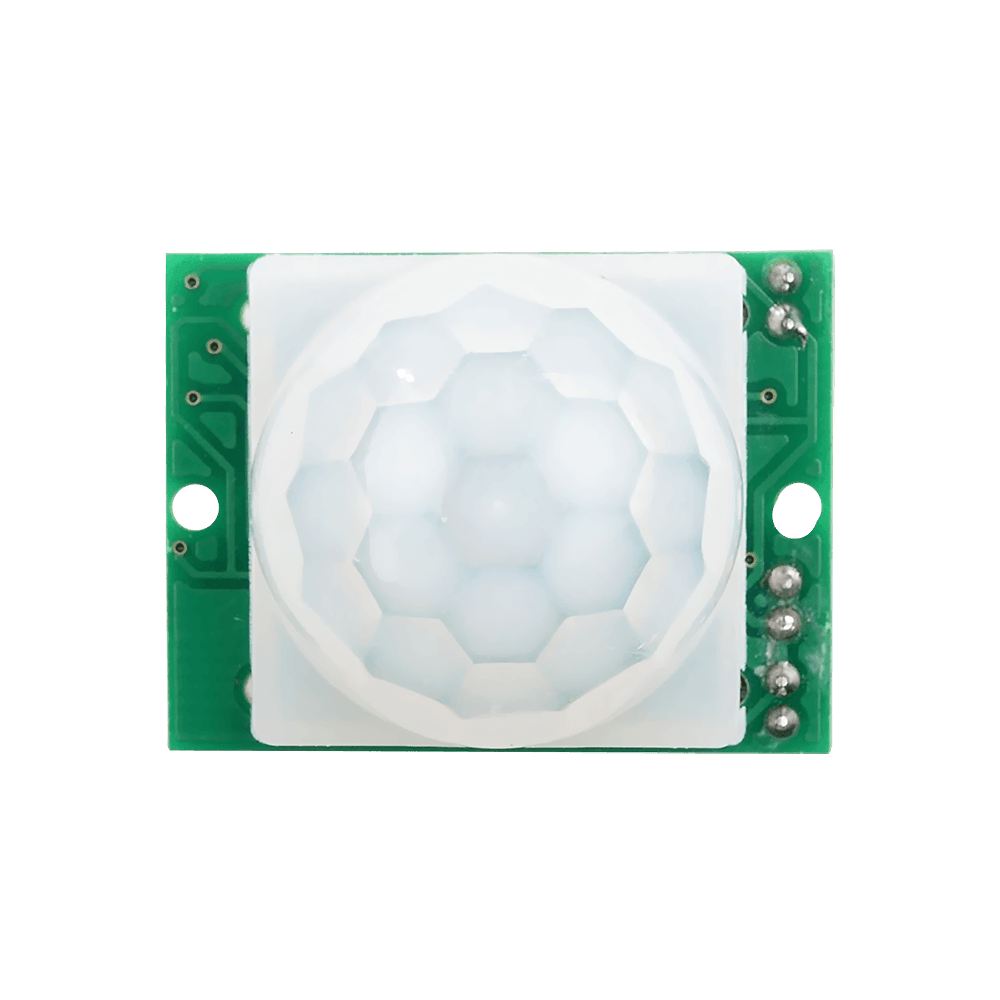
 Design with HC-SR501 Motion sensor in Cirkit Designer
Design with HC-SR501 Motion sensor in Cirkit DesignerIntroduction
The HC-SR501 is a passive infrared (PIR) sensor module designed for motion detection in a range of applications such as security systems, automatic lighting, and home automation. It detects the infrared radiation emitted by objects in its field of view, especially warm moving objects like humans and animals.
Explore Projects Built with HC-SR501 Motion sensor
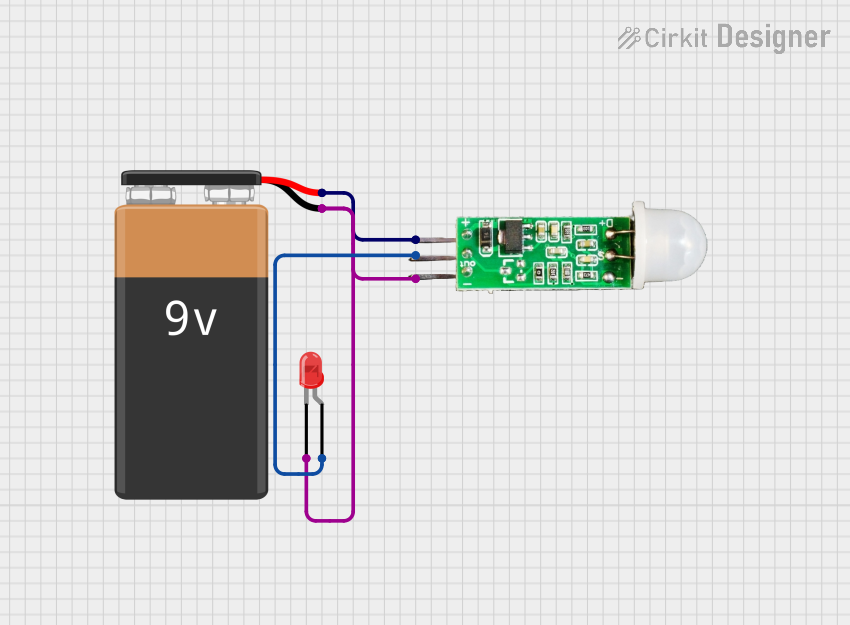
 Open Project in Cirkit Designer
Open Project in Cirkit Designer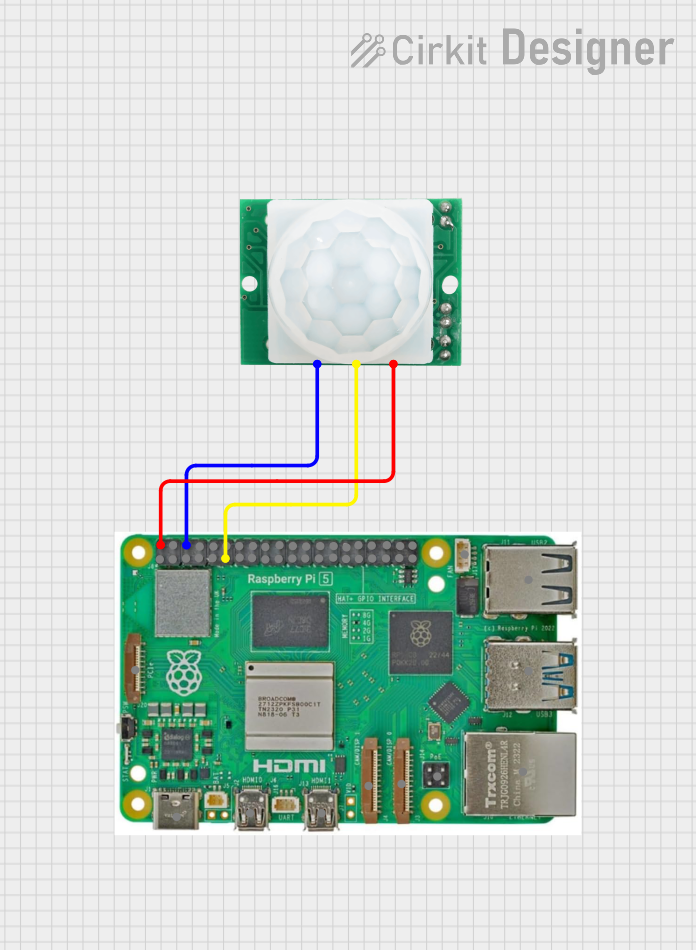
 Open Project in Cirkit Designer
Open Project in Cirkit Designer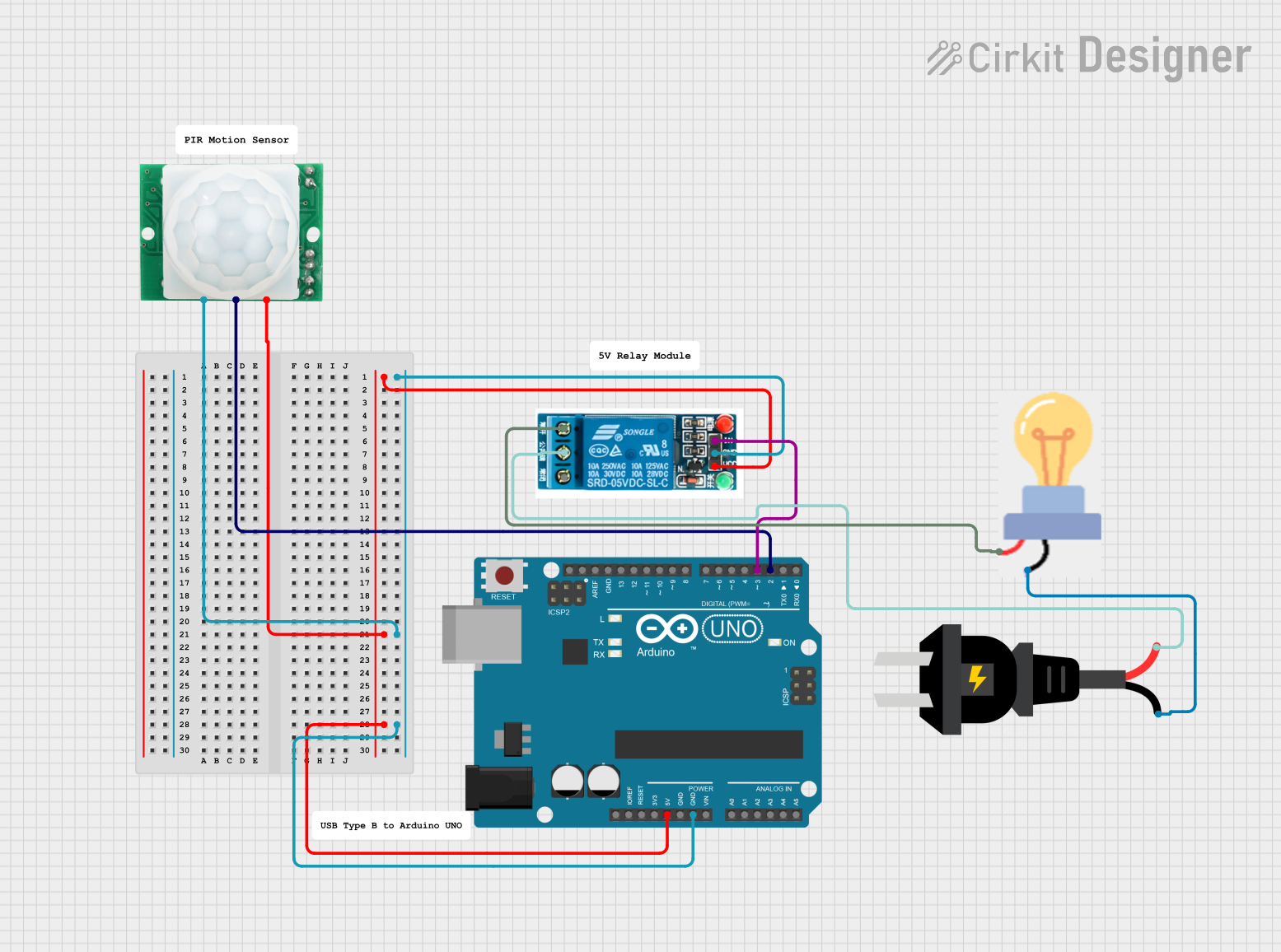
 Open Project in Cirkit Designer
Open Project in Cirkit Designer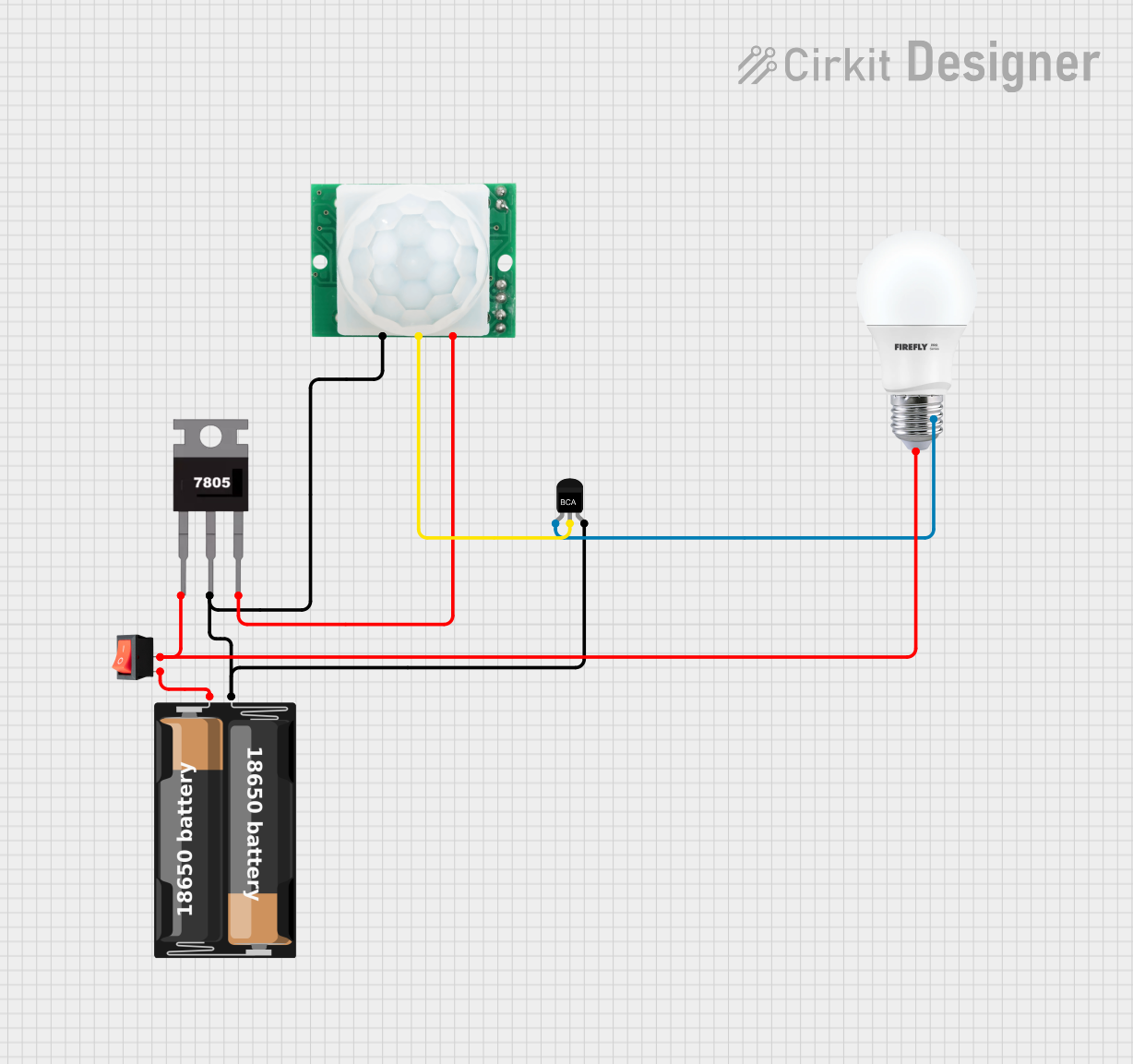
 Open Project in Cirkit Designer
Open Project in Cirkit DesignerExplore Projects Built with HC-SR501 Motion sensor

 Open Project in Cirkit Designer
Open Project in Cirkit Designer
 Open Project in Cirkit Designer
Open Project in Cirkit Designer
 Open Project in Cirkit Designer
Open Project in Cirkit Designer
 Open Project in Cirkit Designer
Open Project in Cirkit DesignerTechnical Specifications
Key Technical Details
- Voltage: 4.5V to 20V
- Current: Idle ~50uA, Working ~65mA
- Sensing Angle: < 100 degrees
- Sensing Distance: Up to 7 meters (adjustable)
- Output Voltage: High 3.3V (motion detected), Low 0V (no motion)
- Output Delay: 5 seconds to 200 seconds (adjustable)
- Operating Temperature: -20°C to +80°C
Pin Configuration and Descriptions
| Pin Number | Name | Description |
|---|---|---|
| 1 | VCC | Power supply input (4.5V to 20V) |
| 2 | OUT | Output signal (High/Low) |
| 3 | GND | Ground connection |
Usage Instructions
Connecting to a Circuit
- Connect the VCC pin to a power supply within the range of 4.5V to 20V.
- Connect the OUT pin to a digital input on a microcontroller like an Arduino UNO.
- Connect the GND pin to the ground of the power supply and the microcontroller.
Important Considerations and Best Practices
- Ensure that the power supply voltage does not exceed the maximum rating of 20V.
- Avoid placing the sensor in an environment with rapid temperature changes to prevent false triggers.
- The sensor requires a warm-up time of approximately 20-60 seconds to calibrate to the infrared level of the room.
- Adjust the sensitivity and time delay potentiometers according to the application needs.
- Use a pull-up resistor if the microcontroller input pin is not internally pulled up.
Example Arduino Code
// Define the motion sensor pin
const int motionSensorPin = 2; // Connect HC-SR501 OUT pin to Arduino pin 2
void setup() {
pinMode(motionSensorPin, INPUT); // Set the motion sensor pin as an input
Serial.begin(9600); // Start serial communication at 9600 baud rate
}
void loop() {
int motionStatus = digitalRead(motionSensorPin); // Read the sensor value
if (motionStatus == HIGH) {
// Motion detected
Serial.println("Motion detected!");
// Add your code here to handle motion detection event
} else {
// No motion detected
Serial.println("No motion.");
}
delay(1000); // Wait for 1 second before reading again
}
Troubleshooting and FAQs
Common Issues
- Sensor always outputs HIGH: Check if the time delay is set too long or the sensor is in a continuous trigger mode.
- Sensor does not detect motion: Ensure the sensor is properly powered and the sensitivity is correctly adjusted.
- False triggers: Adjust the sensor's location or sensitivity to avoid false detections.
Solutions and Tips for Troubleshooting
- Warm-up Time: Allow the sensor to warm up for 1-2 minutes after powering up.
- Adjustments: Use the onboard potentiometers to fine-tune the delay time and sensitivity.
- Interference: Keep the sensor away from heat sources and objects that can cause rapid temperature changes.
FAQs
Q: Can the HC-SR501 sensor work outdoors? A: The HC-SR501 can work outdoors but it's not weatherproof. It should be placed in a protective enclosure to prevent damage from the elements.
Q: How can I extend the output signal duration? A: Turn the time delay potentiometer clockwise to increase the duration of the output signal.
Q: What is the range of detection of the HC-SR501? A: The detection range can be up to 7 meters, but it's adjustable via the sensitivity potentiometer.
Q: Is it possible to power the HC-SR501 with a 3.3V supply? A: No, the minimum supply voltage is 4.5V. Using a voltage lower than this may result in unreliable or no operation.